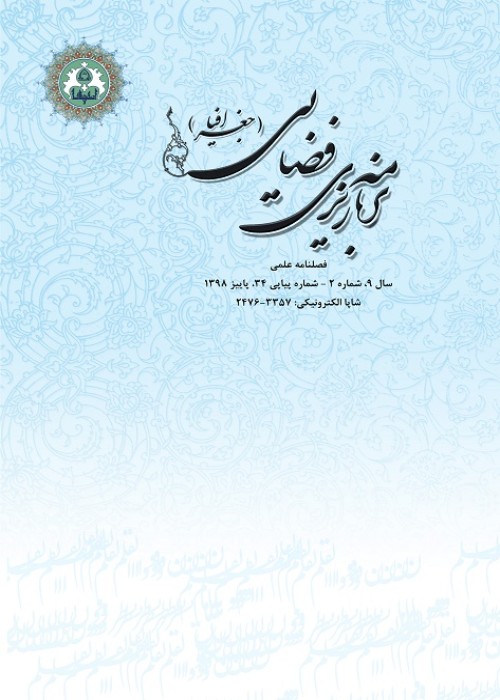Analysis of Local-Spatial Changes in Rural Participatory Behaviors for the Implementation of Water Transfer Plan from Half-Wells to Agricultural Lands in Sistan Area
In recent years, decreasing or stopping the inlet flows of Hirmand River to Sistan area, successive droughts, drying of Hamoon Wetland, and closing of the border have all provided very poor conditions for people’s livelihoods in Sistan Area so that many villagers have migrated to other parts of Iran. In this regard, the irrigation plan of 46,000 hectares of the agricultural lands of Sistan Plain through the national project of water transfer from half-wells with modern irrigation systems was approved and implemented to maintain the population and sustainability of the area. Nevertheless, based on the past experience, many projects were found to have failed without people's participation.
The present study aimed to measure the villagers’ levels of participation in the implementation of the water transfer project besides analyzing the local-spatial variations of their participatory behaviors.
The statistical population of this research included all the villages within the construction unit of Hamoon 4. Using Cochran's formula, 20 villages were randomly selected. For data analysis, descriptive and inferential statistics (Scheffe and T tests) were used in SPSS software and a combination of Fuzzy Analytic Hierarchy Process (FAHP) approach and the Gray Relationship Analysis (GRA) technique was utilized in the GIS environment to compare the local-spatial variability of rural participation in the project implementation.
The villagers’ participation levels based on various components showed that the highest rates of participation in the upstream and downstream villages were related to the components of "Cadastral scrutiny" and "decision-making and consensus" with the means of 2.43 and 3.82, respectively. The overall results of the study indicated low and average levels of participation in the upstream and downstream villages, respectively. In fact, the level of rural participation was higher than in the past due to the impact of a justice-oriented view on the fairer distribution of and access to water through traditional canals and streams. This issue had been realized by the downstream villages getting away from the half-wells, main tributaries of rivers, and surface water currents and approaching the radius of 14-23 km to the end of rural settlements.
- حق عضویت دریافتی صرف حمایت از نشریات عضو و نگهداری، تکمیل و توسعه مگیران میشود.
- پرداخت حق اشتراک و دانلود مقالات اجازه بازنشر آن در سایر رسانههای چاپی و دیجیتال را به کاربر نمیدهد.



